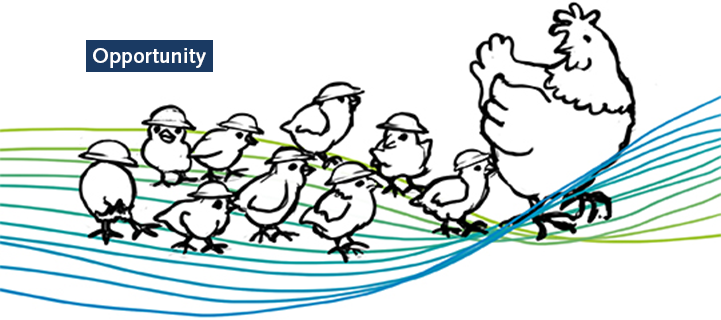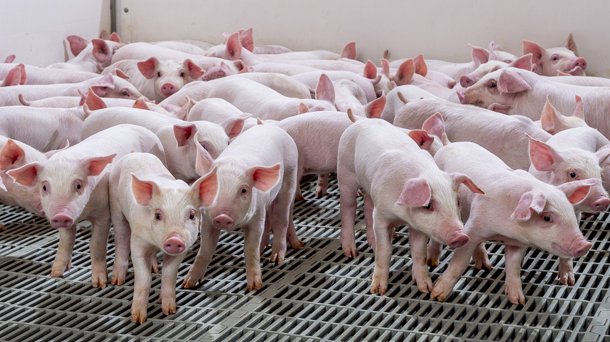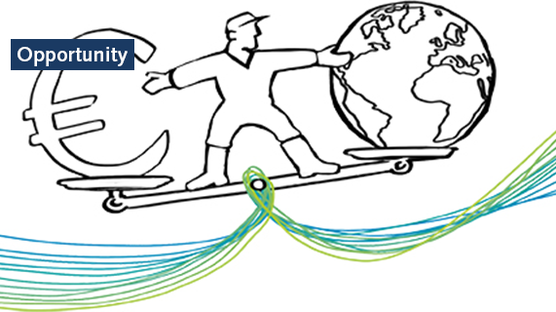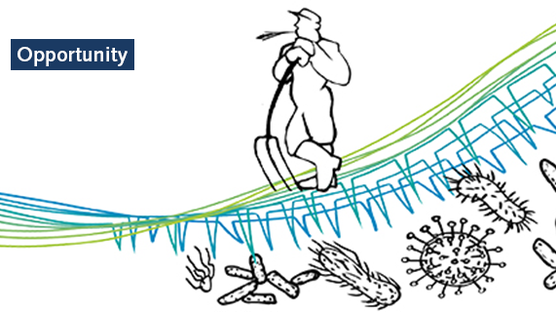
Published on May 1, 2021
Breeding for self-reliant animals
We, Hendrix Genetics, are working towards setting new standards. Standards that include social, economic and environmental improvements. One standard that combines all three is breeding for self-reliant animals.
As social acceptance of the way our food is produced is becoming more important all over the world, we can make sure that with each new generation, the animals improve on being self-reliant. Wouldn’t it be wonderful, to have animals as a part of your employee base? We can envision our animals easily taking care of themselves and their offspring. Animals don’t take a day off. Each and every day, the animal protein sector has a duty to take care of their animals. Making this important job a tiny bit easier with each new generation to come, is a sustainable future outcome while choosing Hendrix Genetics.

Self-reliant meaning in different cultivated species
Self-reliant animals are equipped to take care of themselves and each other better. They can withstand challenges and disease disruptions better, handle different housing settings or quality standards more easily. Breeding for self-reliant animals has many social, economic and environmental advantages.
Animal welfare is one of the top priorities. Animals that are held in the animal protein industry must always receive proper care and management. Different cultivated species have different needs and their natural behavior asks for specific treatments and housing systems. Around the world we do see differences in husbandry and housing systems, climate and disease challenges etc. While caring for animals you can easily pick out the animals that are more self-reliant. With sound science and results backed by data, we select animals that show results on specific traits that are related to resilience and being self-reliant.
For example, pigs show big differences when it comes to being self-reliant. While some sows need lots of interventions, others care for themselves and their offspring naturally. Within each new generation, while picking the best of the best, we have a herd that wins on being self-reliant. Sows that give birth to their offspring on their own without the help of foster-mothers. Sows that have sufficient milk and wean uniform piglets into robust and thriving pigs, without the need of feed additions, shuffling due to weight and health differences. We can think of a couple more social, economic and environmental issues to address.
Being self-reliant is not only cost effective, the environment improves due to the reduction in waste output and resources needed. Animals that can withstand diseases, climate changes and need lesser treatments to prevent or overcome illness make a safe and secure supply of food much more attractive.
On a social aspect – animals that can take care of themselves, need little to no interventions, can cope with different housing and husbandry challenges better and thrive in their provided habitat. This increases their animal welfare standard tremendously. Poultry, for example, should be able to display their natural behavior, while being less aggressive towards each other and show less signs of stress within their environment.
Each new generation of chickens supports the global food challenge a bit better. Helping out smallholder farmers, producers and consumers around the world. According to Bill Gates: “Anyone who is living in extreme poverty is better off if they have chickens”. And we fully agree. Together with the Bill & Melinda Gates Foundation we invest in a project to support African smallholder farmers with dual purpose chickens. Providing meat and eggs to their surrounding area. With the access to better genetics, people can build a better livelihood and provide more food to their community. This is only possible with poultry that survives harsh conditions and lower biosecurity standards. The same breeds also must thrive in other parts of the world. Making self-reliant even more important and challenging.
Aquatic species are catching up as well. When before growth and survival only mattered, nowadays we can improve on social, economic and environmental impact by picking the best of the best without handling them or picking them out of the water too often. Due to genetic markers, sensor technology and tags, the best families can be selected, making sure each new generation shows progress and has a more sustainable impact.

Environmental fit
For survival everybody depends on their habitat. What the environment provides is making it more or less difficult to survive. Within the animal protein industry there are a multitude of housing systems and regional differences in provided standards. Therefore, not every animal is suited for each environment. If you take a closer look at laying hens for example, there are breeds that thrive in a free-range system, while others can’t be left alone too long outside or in a big group. Specifics like behavior, feathering and even color make a big difference. A white chicken on an African field is easily caught by the surrounding wildlife. A naked neck chicken is far better suited for that same African field. It can even tolerate the heat much better.
While breeding for self-reliant animals, Hendrix Genetics experts look at a multitude of angles. We work with a global multispecies R&D team and several specialized teams per species. Selection traits and tailoring to fit local needs.
Trout is tested in sentinel groups to pick the best families for colder water, making them fit easier for certain markets. Throughout the world, people have differences in taste, therefore a boar breed is mostly chosen for the meat quality or intramuscular fat level they display. Nevertheless, while different parts of the world ask for different adaptation and have different needs, traits like: robustness, being able to grow even when presented more difficult challenges, taking care of their offspring and each other remain a high priority in our breeding programs.
Managing animals and laborers alike
When it is hard or expensive to attract good laborers or if housing standards are more of a challenge, you can pick a breed which is more suitable for these challenges. Self-reliant animals will add up if husbandry and housing standards could benefit from improvement. Fostering mothers in pigs, smothering or pecking behavior, tail biting and the treatments that come with it to prevent or solve these situations are industry challenges we want to overcome as well. By balanced breeding and selecting animals that show economically, socially and environmentally favorable traits, we progress towards a more sustainable future together.
What are your thoughts on our social sustainability stories?
If there is a topic you would like us to cover, please submit it via the button below.
You've read an opportunity article. Interested in the solution or challenge?
Do you want to explore all articles?



